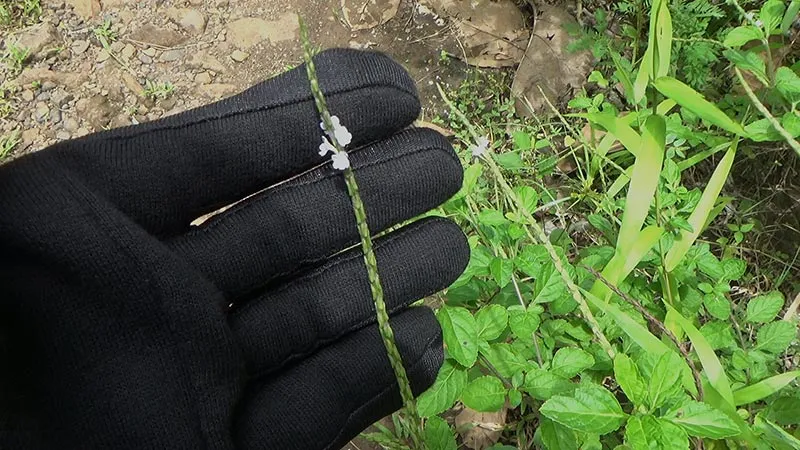Tiva porterweed (Stachytarpheta abortiva) is a species of plant in the Verbenaceae, shrub, erect, 1-2 meters high, branched, woody stems and light brown with white spots, young stems green or black.
S. abortiva has green leaves all year round in all seasons. Leaves arranged oppositely on main stem, round to oblong, slightly serrated edge, pointed to blunt tip, green, a main vein in the middle and 3-5 pinnate minor veins on each side.
Inflorescences in panicles, sitting in rows along long stalks, green and scaly. The single flower is trumpet-shaped and white. The flowers are in the form of buds along the scaly stalk then starting from the bottom will bloom sequentially to the end of the stalk.
Tiva porterweed grows on roadsides, unkempt gardens, meadows, sandy soils and open areas that get sunlight up to 700 meters elevation.
Kingdom: Plantae
Phylum: Tracheophyta
Subphylum: Angiospermae
Class: Magnoliopsida
Order: Lamiales
Family: Verbenaceae
Tribe: Duranteae
Genus: Stachytarpheta
Species: Stachytarpheta abortiva
S. abortiva has green leaves all year round in all seasons. Leaves arranged oppositely on main stem, round to oblong, slightly serrated edge, pointed to blunt tip, green, a main vein in the middle and 3-5 pinnate minor veins on each side.
Inflorescences in panicles, sitting in rows along long stalks, green and scaly. The single flower is trumpet-shaped and white. The flowers are in the form of buds along the scaly stalk then starting from the bottom will bloom sequentially to the end of the stalk.
Tiva porterweed grows on roadsides, unkempt gardens, meadows, sandy soils and open areas that get sunlight up to 700 meters elevation.
Kingdom: Plantae
Phylum: Tracheophyta
Subphylum: Angiospermae
Class: Magnoliopsida
Order: Lamiales
Family: Verbenaceae
Tribe: Duranteae
Genus: Stachytarpheta
Species: Stachytarpheta abortiva
